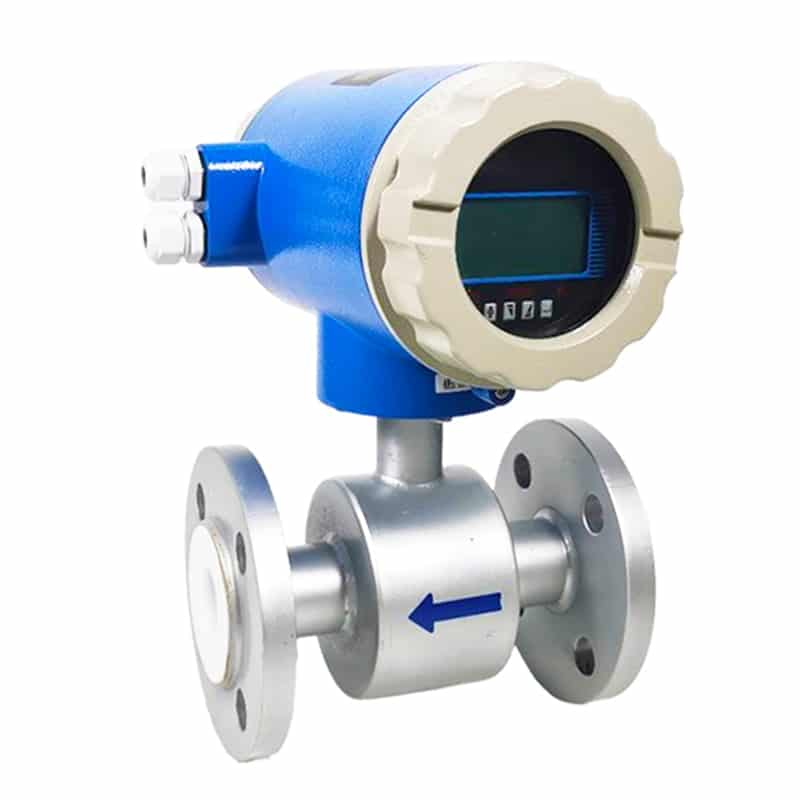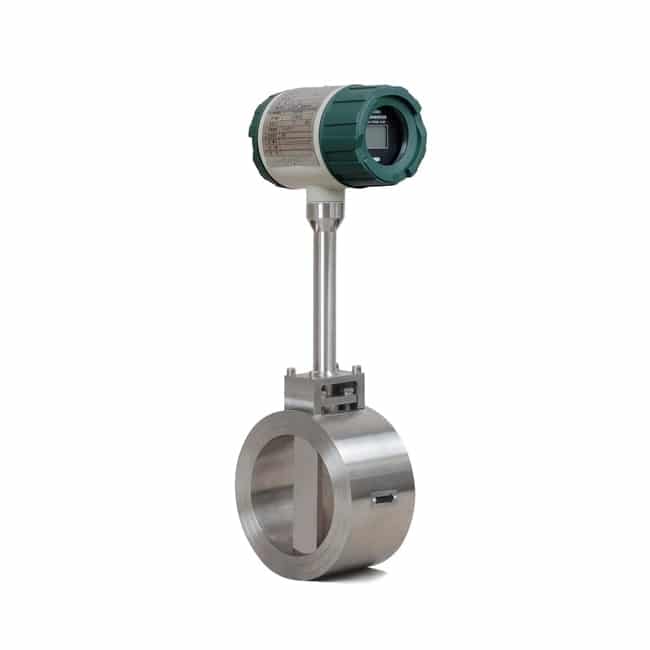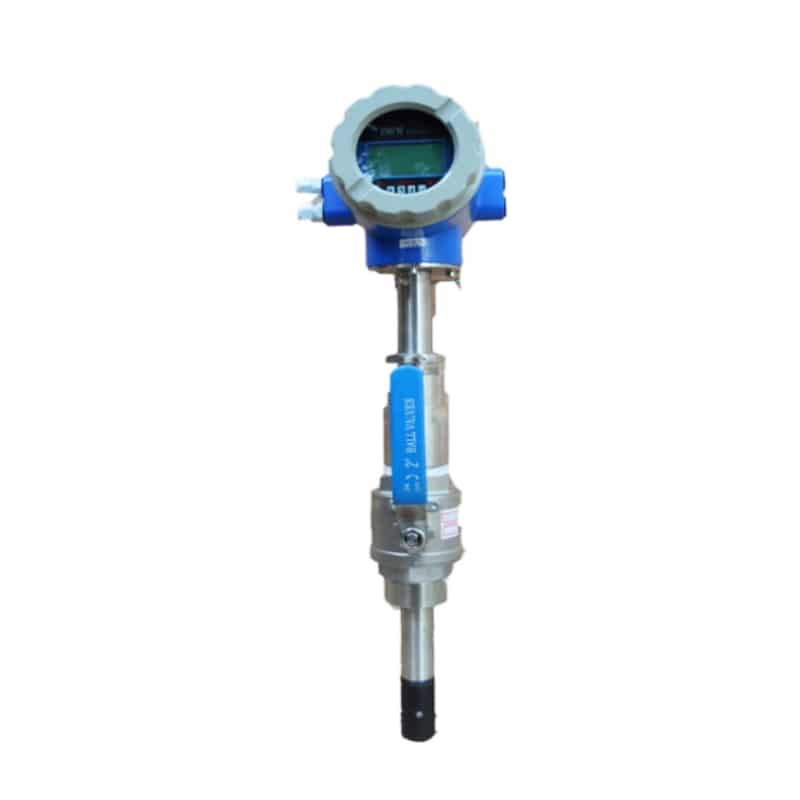Electronic flow meters are industrial digital flow meters used for fluid flow measurement. In many application scenarios, people often use electronic flowmeter is electromagnetic flowmeter.
Electronic flowmeter types, such as electromagnetic flowmeter, vortex flowmeter and ultrasonic flowmeter. Electronic flowmeter for industrial liquids, water, natural gas, gasoline, fuel, air. Electronic flowmeter converts the monitored fluid flow into an electronic signal. This includes pulse signals, 4-20mA standard signals, etc.
They are not fully electronic in nature, but they represent a logical grouping of flow measurement technologies. All of these meters have no moving parts. They function through highly sophisticated electronics and circuitry.
What is an electronic flow meter?
A flow meter is a device used to measure the volume or mass of a gas or liquid. Flow meters have many names depending on the specific industry, such as flow meters, flow indicators, liquid meters, flow sensors, flow meters, etc.
Electronic flow meters are industrial digital flow meters used for liquid flow measurement. Common types of electronic flow meters are electromagnetic, vortex and ultrasonic flow meters.
Electromagnetic flowmeters are essentially the most straightforward electrical flowmeters with a first operating principle derived from Faraday’s Law. Vortex flowmeters rely on piezoelectric sensors to detect vortex currents coming off a fixed shedding bar. And ultrasonic flowmeters owe their successful application to sophisticated digital signal processing.
Electronic flow meter products
Electronic flowmeter types and working principle
Simply put, the working principle of electronic flowmeter is to convert the flow rate of the measured fluid into an electronic signal through the flow sensor assembly. And can be flow display and signal output. For example, display instantaneous flow, cumulative flow, etc. Roughly divided into the following 3 categories.
Electromagnetic flow meter
Electromagnetic flow meters work based on Faraday’s principle of electromagnetic induction. Electromagnetic flowmeter is also known as only conductive fluid can be used.
Magnetic flow meter consists of a non-magnetic pipe lined with an insulating material. A pair of magnetic coils are positioned at right angles to the flow and a pair of electrodes penetrate the pipe and its lining. When electrically conductive fluid flows through the pipe under the influence of a specific density magnetic field generated by the electromagnetic coil, the amount of voltage (E) generated across the electrodes is predicted by Faraday’s law to be proportional to velocity (V) proportional to the liquid.

E = KV
Where
E = the amount of voltage generated at the electrode
V = velocity of the fluid flowing through the pipe
K=calibration constant of the meter
Advantages of using electromagnetic flowmeter
- High accuracy and stability
- Self-checking
- Bi-directional measurement
- No pressure loss
- No moving parts
- Possible for hygienic purposes
- Available in large sizes
Disadvantages of using electromagnetic flow meters
- Cannot be used to measure gases, vapors and liquids containing large amounts of gas
- Can not be used to measure liquid media with very low conductivity Electromagnetic flowmeter can not measure media such as petroleum products or organic solvents
- Can not be used to measure high temperature media. Currently restricted by the general industrial electromagnetic flowmeter measuring tube lining materials and electrical insulation materials.
- Electromagnetic flowmeter is susceptible to the influence of external electromagnetic interference.
Vortex flow meter
Vortex flow meters are typically made of 316 stainless steel or Hastelloy and include a blunt body, a vortex sensor assembly, and transmitter electronics. When a non-streamlined object (also called an obtuse body) is placed in the path of a high Reynolds number flow, the fluid will alternately separate from the object on its downstream sides and, as As the boundary layer separates and coils back on itself, the fluid forms vortices. These vortices result in areas of pressure fluctuations detected by piezoelectric or capacitive sensors. Fluid velocity depends on the frequency of the generated vortices and the Strouhal number and is given by the following equation

V = (fxh)/S
Where
V = average velocity of the fluid flow
f = frequency of the generated vortex
h = width of the obtuse body
S = number of Strouhal
S varies with Reynolds number; however, it is almost constant over a wide range of flow rates.
In practice, a k-factor representing the number of vortices generated per unit volume is used instead of S. Thus the volumetric flow rate is
Q = f/K
Vortex flow meters are not typically recommended for dosing or other intermittent flow applications. This is because the drip flow setting of the dosing station may be below the minimum Reynolds number limit of the meter. The smaller the total batch, the more significant the resulting error may be.
Low pressure (low density) gases will not generate strong enough pressure pulses, especially at low fluid velocities. Therefore, in this type of service, the gauge is likely to have a poor range and will not be able to measure low flow rates. On the other hand, if the reduced range is acceptable and the meter is sized for normal flow, then a vortex flowmeter may still be considered.
The permanent pressure loss through the vortex flowmeter is about half that of an orifice flowmeter with about two velocity heads. (Velocity head is defined as V2/g, where V is the flow rate and g is the gravitational constant in consistent units.) If the piping and instrumentation are properly sized and identical, the pressure drop may be only a few pounds per square inch. However, downsizing (installing smaller than line size gauges) to increase the Reynolds number can increase the head loss to more than 10 psi. It is also important to ensure that the shrink pressure is not lower than the vapor pressure of the process fluid, as this can lead to cavitation. Naturally, if the back pressure on the meter is lower than the steam pressure, the process fluid will flash and the meter reading will be meaningless.
The main advantages of vortex flow meters are their low sensitivity to changes in process conditions and low wear relative to orifice or turbine flowmeters. In addition, initial and maintenance costs are very low. For these reasons, they have gained wider acceptance among users.
Ultrasonic flow meter
The speed of sound propagation in a fluid depends on the density of the fluid. However, if the density is constant, the time of passage (or reflection) of ultrasound can be used to determine the velocity of the flowing fluid.
Ultrasonic flow meters measure fluid velocity by transmitting high-frequency sound waves along the fluid flow path. Fluid motion affects the propagation of these sound waves, which can then be Then it can be measured to infer the fluid velocity. There are two main types of ultrasonic flowmeters: Doppler and transmission time. Both types of ultrasonic flowmeters work by transmitting Both types of ultrasonic flow meters work by transmitting high-frequency sound waves into the fluid stream (incident pulse) and analyzing the received pulses.

Doppler flow meters utilize the Doppler effect, which is a frequency shift caused by waves emitted or reflected from a moving object. Doppler flow meters reflect sound waves from bubbles or particles in the air stream Particulate material in the reflection of sound waves, measuring the frequency shift and inferring the fluid velocity and thus the flow rate based on the magnitude of that frequency shift.
In the design of a transit time ultrasonic flowmeter, the time of flight of the ultrasonic signal is measured between two transducers, one upstream and one downstream. With flow or The difference in time spent against the flow determines the fluid velocity from which the flow rate is inferred.
Advantages of ultrasonic flowmeters
- The electronics in the ultrasonic flowmeter include an ultrasonic flowmeter detector that compensates and adapts to changes in fluid distribution, fluid type and pipe material.
- Portable ultrasonic flowmeter converters can be used as a direct method of effectively determining flow compared to other flow systems.
- Compared to other mechanical flow meters, ultrasonic flow meter converters are inexpensive to use and maintain because they have no moving parts in these flow meters.
- They are designed to be very precise and do not impede the flow of liquids, so they can be used for sanitary, corrosive and abrasive liquids.
Disadvantages of ultrasonic flow meters
- The main disadvantage of ultrasonic flowmeters is cost. Compared to other types of mechanical flow meters, flow meters are very costly .
- Compared to mechanical flow meters, ultrasonic flow meters are more complex and therefore require experts to repair and maintain the flow meters.
How to choose your electronic flow meter?
The important factors when choosing a right flow meter device are
- Media to be measured
- Accuracy
- Cost
- Flow range
- Operating requirements
- Maintenance
- Lifetime
- Delivery time
These factors are more or less interrelated. For example – the cost of a flow meter increases with accuracy and quality of life. Flowmeter calibration and maintenance are also important to consider.
More articles on flowmeters:
Chilled water flow meter
Ultrasonic flow meter working principle
Difference between flow meter and flow transmitter
Working principle of rotameter




